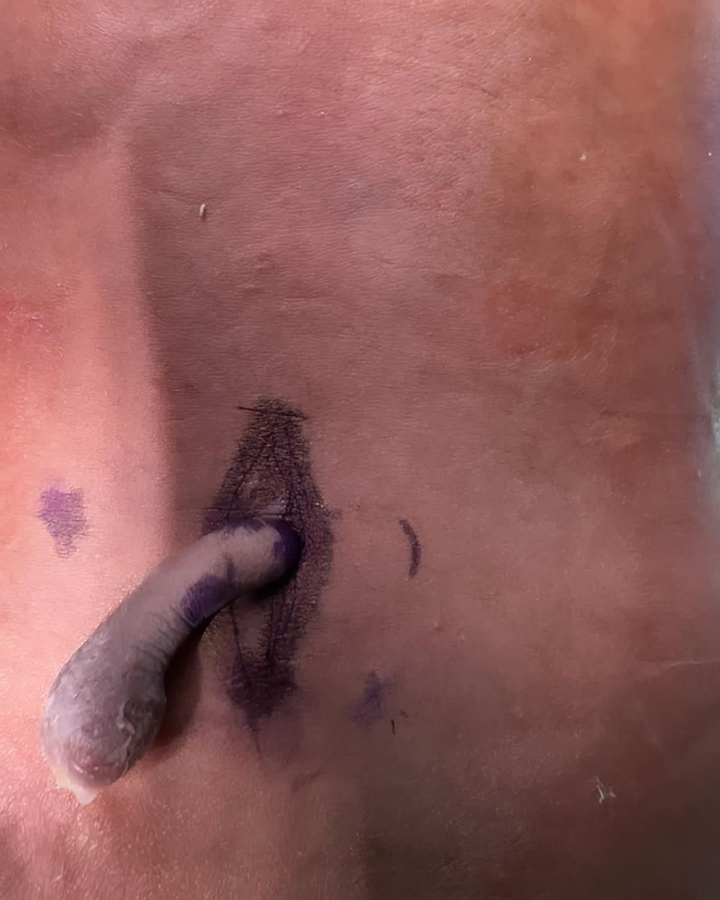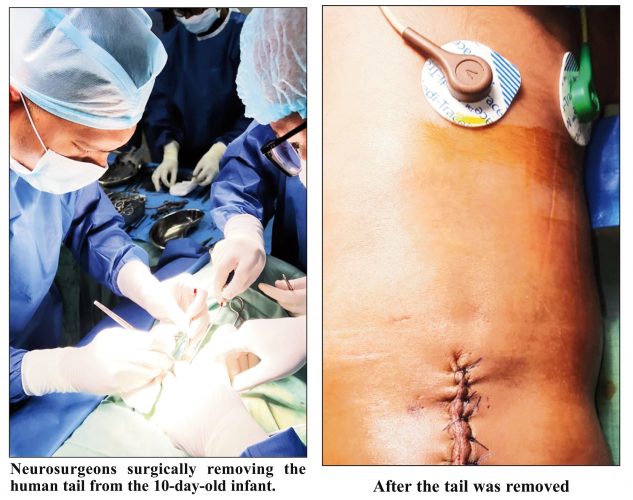Neurosurgeons at the Georgetown Public Hospital (GPH) on Sunday last, successfully removed from a 10-day-old infant, a tail, described as a rare medical phenomenon, which was a continuation of the spine/spinal nerve element.
The medical team, led by Chief Neurosurgeon Dr Amarnauth Dukhi, successfully reconstructed the baby’s spinal cord, which would allow the child an opportunity to develop normally. It was a sophisticated technique which required the protection of the patient’s spinal nerves. The infant was discharged from the hospital.
According to the GPH, the human tail is usually considered a marker of underlying pathology of peculiar spinal dysraphism. The reported presentations of spinal dysraphism include spina bifida occulta, meningocele, and spinal lipoma or tethered spinal cord. However, the etiological basis of the human tail is unclear.
The distinctive presentation of a pathology such as the human tail is uncommon not only in Guyana but globally, the hospital said. A rare congenital anomaly which mostly presents immediately after birth or in early childhood, less than 60 occurrences of caudal human tail have been documented in medical literature.
A baby having a caudal appendage resembling a tail generates an unusual amount of interest, excitement and anxiety and parents may be concerned about the social stigma, superstition or shame that may befall their young child when they are integrate into society, the release added.
The GPH said that as a tertiary medical institution with the commitment to medical education and research, it will be presenting this case to the global medical community for documentation and review.




